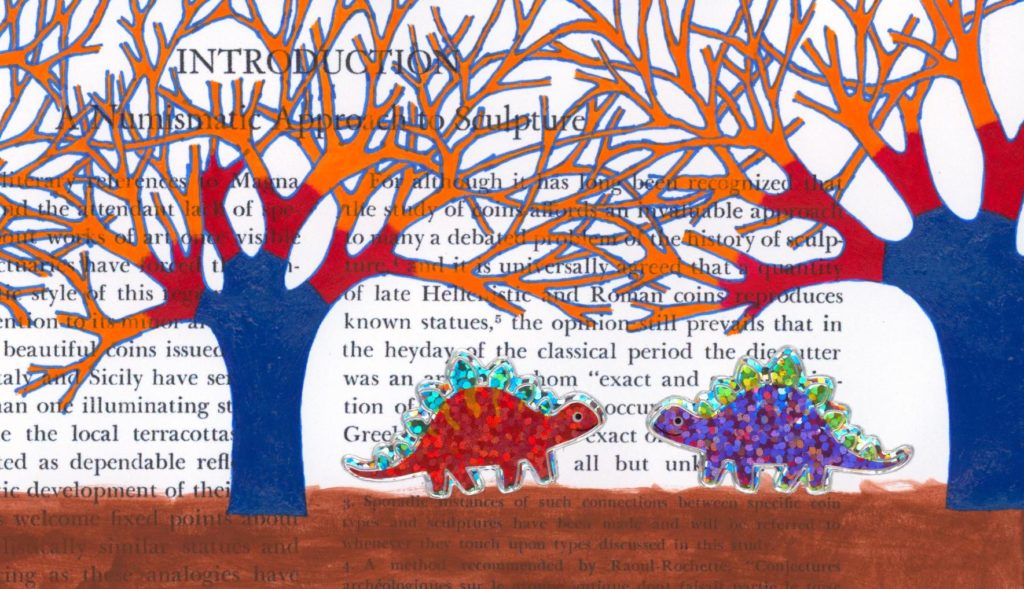
What is there in the visual arts that can help disseminate research and co-create with diverse audiences? How can sense of humour, colour and movement in space transform concepts into a creative and playful experience? And, why are academic projects and contemporary pop culture relevant to one another? These questions and more will be addressed during an innovative experiential learning workshop.

Lehmann, Phyllis W. Statues on Coins of Southern Italy and Sicily in the Classical Period.
New York: New York University, Institute of Fine Arts, 1946
Artist and York alumna Noa Yaari (PhD '18) explores combinations of words and images in the creation and communication of knowledge. In her doctoral project in History, which she completed in 2018, she examined how contemporary historians integrate words and images in their publications to depict the past. To that end, she conceptualized the “multiform grammar” as a system for the analysis and use of verbal-visual rhetoric.
As a Fellow at the Centre for Renaissance and Reformation Studies (CRRS) at the University of Toronto, she currently creates an art installation in which she paints on 30 intersections of words and images that she found in books at the CRRS library.
“In this project” Yaari says “I move 'knowledge' outside of the books, off the shelves and outside of the library to the hallway that leads to it, where the installation will take place. This act utilizes ‘bodies’ such as the body of knowledge at the CRRS, and those of the books, the viewers, and mine. Considering these ‘bodies,’ the project applies the multiform grammar as a system to rearrange knowledge in space. It reminds us that our body takes part in knowledge production and can transform it into room for creativity and play.”

Candelaria, Lorenzo F. The Rosary Cantoral: Ritual and Social Design in a Chantbook from Early Renaissance Toledo.
Rochester: University of Rochester Press, 2008
Her new practice of using an emoji of a book and a bibliographic entry in the captions of this series raises questions about the relationship between words and images, knowledge and art, and scholar and artist. “Through this verbal-visual work, I pull the scholars and their publications, on which I paint, closer to me and my art. Concurrently, I push the whole constellation toward contemporary pop culture, signaling the importance of a holistic point of view and co-creation. The stickers in the paintings are the ancestors of the emojis in the captions,” adds Yaari.

Thomas, Alan G. Fine Books. London: Weidenfeld and Nicolson, 1967
Yaari will be giving a hands-on workshop on art-based knowledge mobilization on Thursday, Nov. 18, at 4 p.m., at the Canadian Knowledge Transfer & Exchange Community of Practice. Click here for further information and registration. Michael Johnny, manager of knowledge mobilization with Innovation York, will be hosting the workshop.
